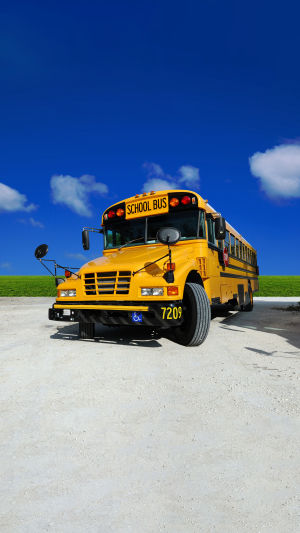The school bus, a large-scale public transportation vehicle, is purposefully designed to cater to the transportation needs of students within a campus setting.
This mode of transportation finds extensive utilization in educational institutions and schools worldwide.
School buses are instantly recognizable with their striking yellow livery and come equipped with specialized safety features aimed at ensuring the utmost security of the students they transport.
1. Historical Background
The origins of the school bus can be traced back to the early 20th century when horse-drawn carriages were initially employed in the United States to offer campus transportation services to students.
With the advent of automobiles, school buses gradually supplanted horse-drawn carriages and emerged as the predominant mode of student transportation. In 1939, U.S. legislation mandated the yellow paint scheme for school buses, a standard that continues to be widely adhered to today.
The evolution of school buses is by no means confined to the United States; they have found widespread use in countries and regions globally. As urbanization progresses and education systems develop, the demand for school buses continues to grow.
2. Design of School Buses
Body Design: School buses typically feature a rectangular design with a flat roof and ample interior space to accommodate a substantial number of students.
Their exterior is adorned with a distinctive yellow color, often embellished with black stripes or other decorations to enhance visibility on the road. Additionally, school buses are typically emblazoned with the school's name and logo for easy identification.
Seating Layout: Inside school buses, bench-style seating is the norm, with students seated on one side, facing the front of the vehicle. This seating configuration optimizes student capacity and provides adequate room for storing school bags and personal items.
Safety Equipment: Safety equipment onboard school buses holds paramount importance. Common safety features encompass emergency exits, fire extinguishers, first aid kits, emergency window-breaking tools, etc., all designed to ensure the safety of students and drivers in case of emergencies.
Powertrain: While school buses primarily employ diesel engines, some variants are powered by natural gas or electric systems. The choice of powertrain often hinges on regional energy policies and environmental considerations.
3. Safety of School Buses
The safety of school buses is a paramount concern due to their role in transporting students, many of whom are young children. Key aspects of school bus safety include:
Yellow Exterior: The vibrant yellow exterior of school buses enhances their visibility on the road, mitigating the risk of collisions with other vehicles.
Seat Belts: Some school buses are equipped with seat belts, typically three-point harnesses, to enhance student safety during transit.
Safety Training: School bus drivers often undergo specialized safety training, including emergency response protocols, to ensure student safety.
Regular Inspections and Maintenance: School buses undergo rigorous mechanical inspections and regular maintenance to ensure their safety and reliability.
Emergency Equipment: School buses are equipped with essential emergency equipment such as emergency exits, fire extinguishers, and first aid kits to handle unforeseen situations.
Driving Speed Limits: School buses typically adhere to lower speed limits to enhance safety.
In summary, school buses constitute an integral part of educational institutions and communities by providing safe and convenient transportation for students while playing a vital role in shaping school culture and fostering social opportunities.
As technology advances and societal needs evolve, school buses will continue to undergo enhancements to meet future demands.





